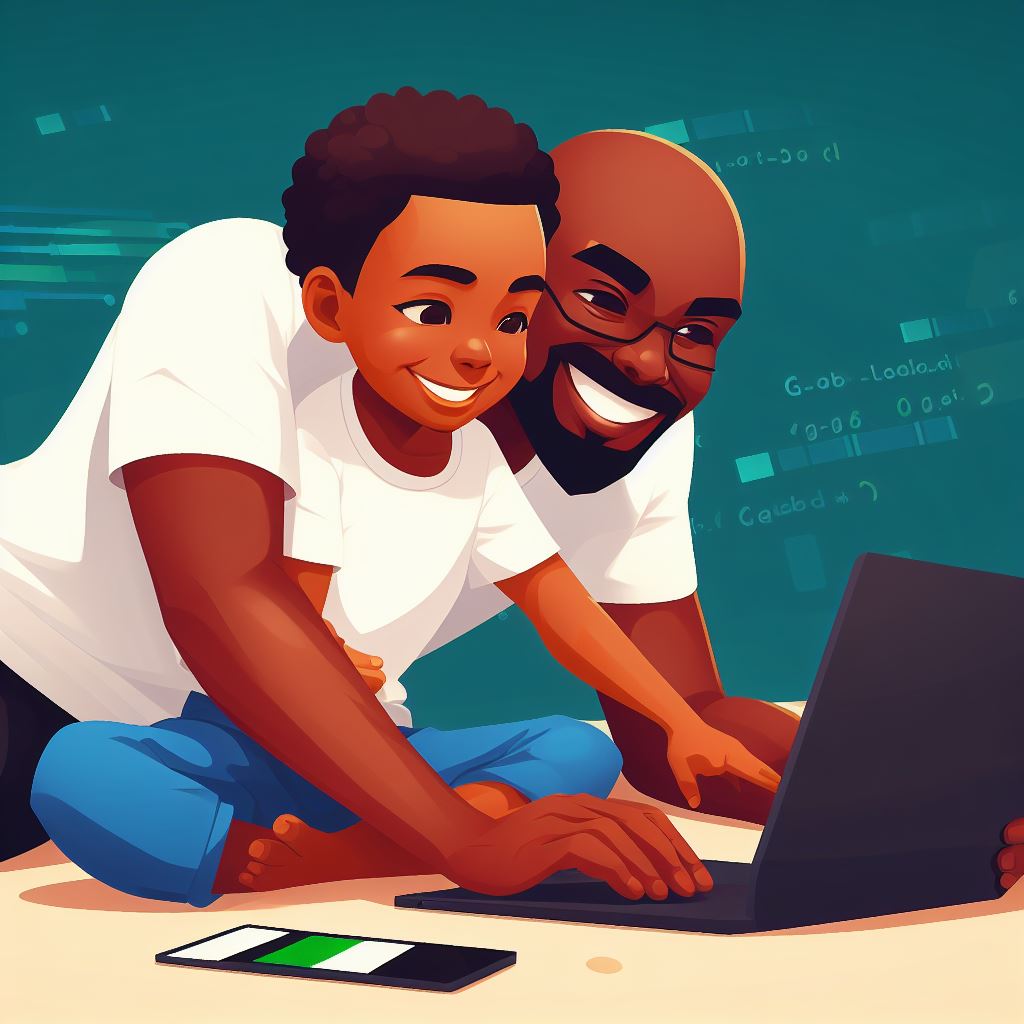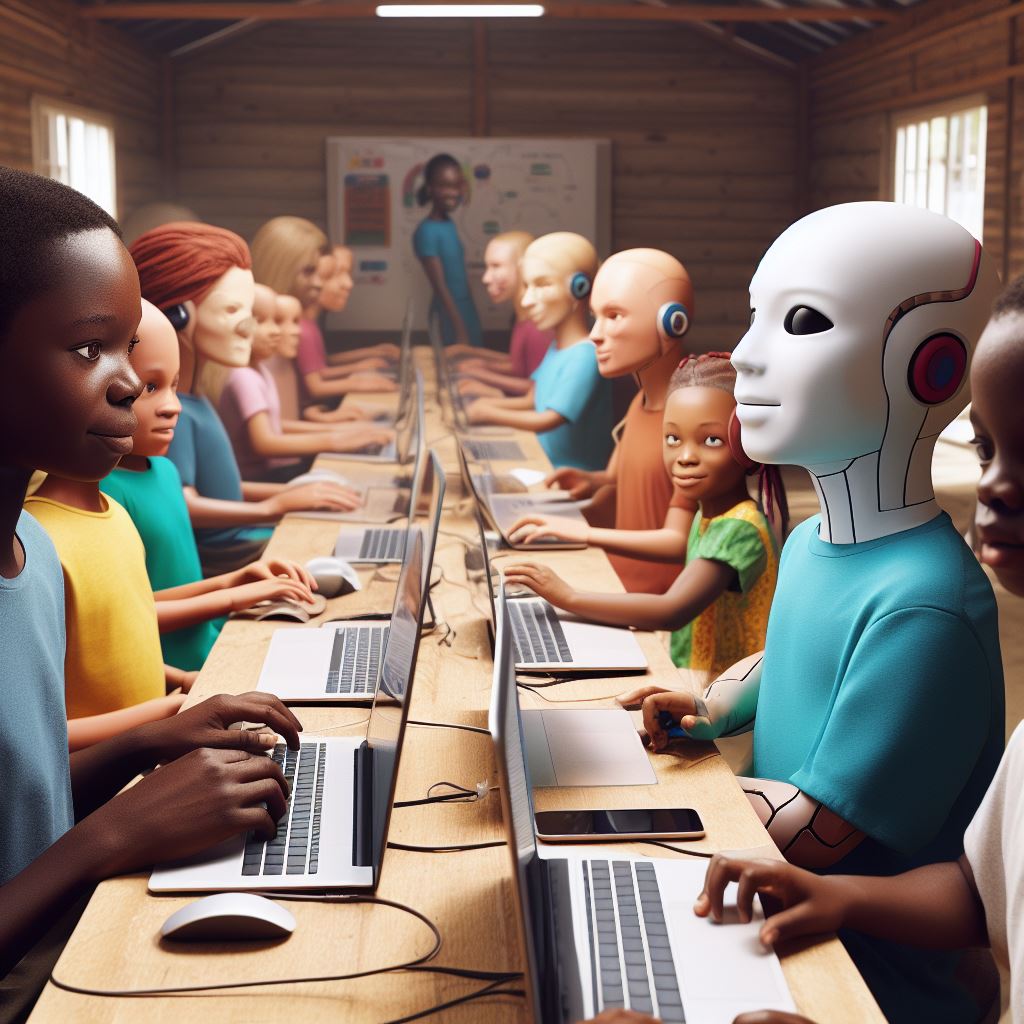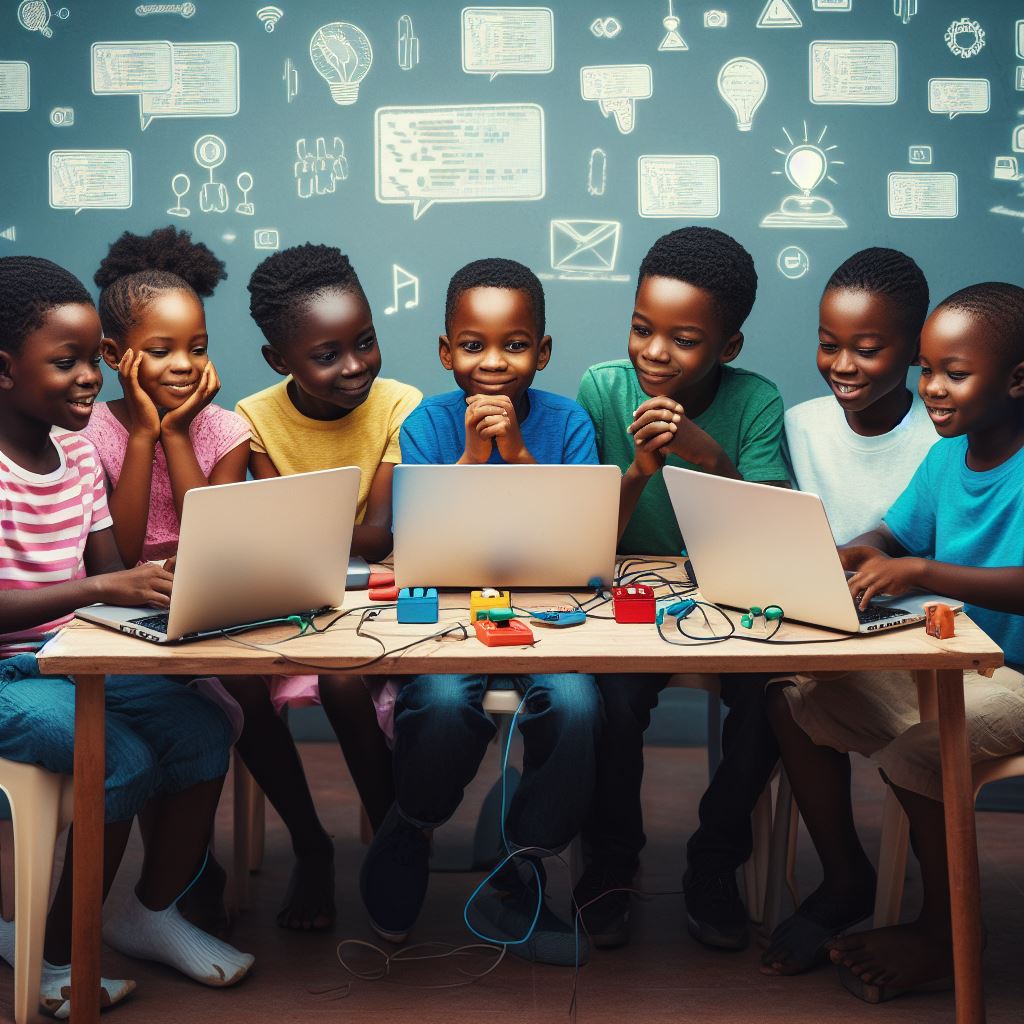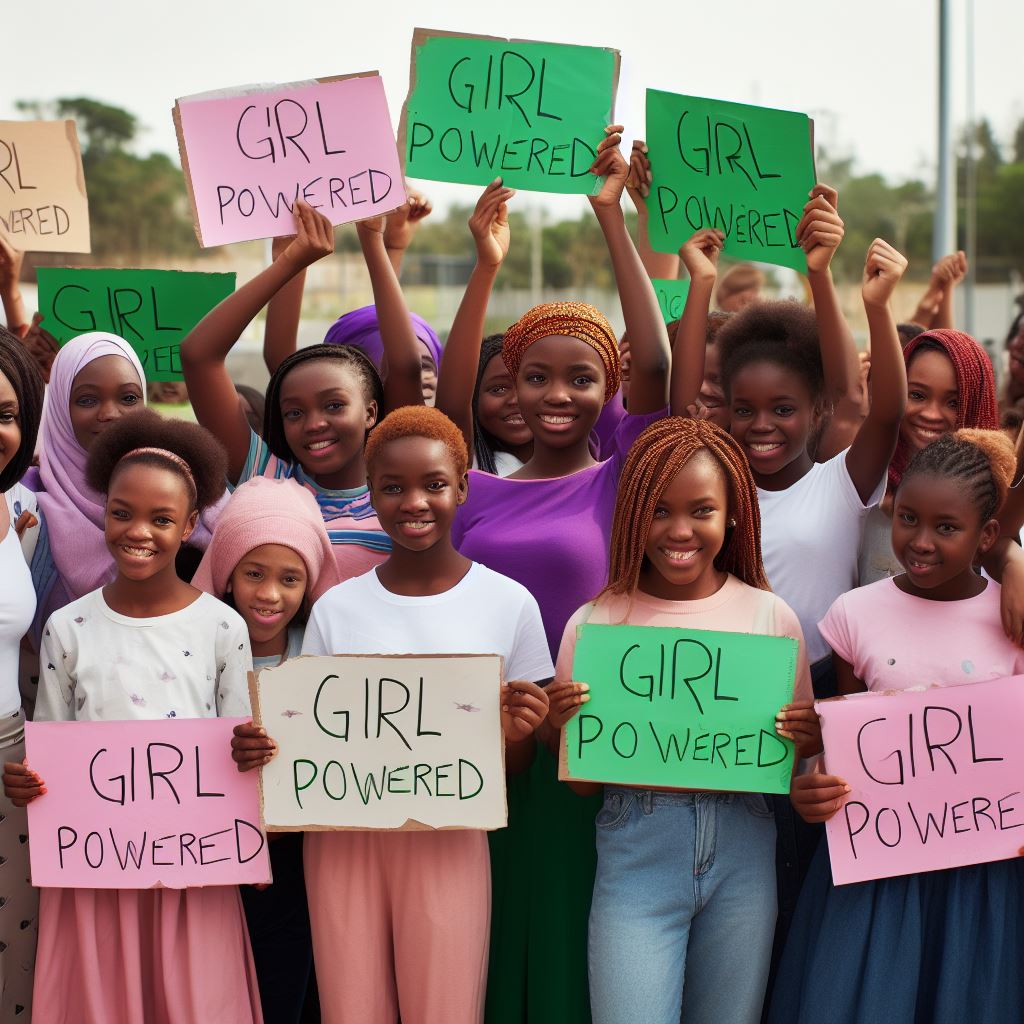Introduction
In the digital age, coding skills are becoming increasingly important for kids. Learning coding can also be fun and engaging for them.
In this post, we will explore seven tips for making coding a fun experience for both kids and parents.
Tip 1: Introduce coding through games and interactive activities.
By incorporating games and interactive activities, kids can learn coding playfully and enjoyably.
Tip 2: Encourage creativity and problem-solving.
By allowing kids to explore their creativity and solve coding challenges, they can find coding more interesting and rewarding.
Tip 3: Connect coding with real-life applications.
Showing kids how coding is used in real-life scenarios, such as creating websites or apps, can make coding more relevant and exciting for them.
Tip 4: Provide hands-on experience with coding projects.
Engaging kids in hands-on coding projects allows them to apply their skills and see the tangible outcomes of their efforts.
Tip 5: Foster collaboration and teamwork.
Encouraging kids to work on coding projects with their peers or parents can create a sense of community and enhance the fun factor of coding.
Tip 6: Offer rewards and incentives for completing coding tasks.
Providing rewards or incentives, such as badges or certificates, can motivate kids to actively participate in coding activities.
Tip 7: Celebrate achievements and showcase coding projects.
Unlock Your Unique Tech Path
Get expert tech consulting tailored just for you. Receive personalized advice and solutions within 1-3 business days.
Get StartedShowcasing kids’ coding projects through exhibitions or competitions not only boosts their confidence but also encourages them to pursue coding further.
In general, coding can be made fun for kids by incorporating games, creativity, real-life applications, hands-on experiences, collaboration, rewards, and celebrations.
By adopting these tips, parents can ignite their children’s interest in coding and lay a solid foundation for their future success in the digital world.
Start with Creative Projects
When it comes to making coding fun for kids, creativity is key.
Encourage them to work on creative coding projects, such as building websites, designing games, or creating animations. This allows them to express their creativity while learning valuable coding skills.
Allowing kids to express their creativity through coding is important. It helps them develop problem-solving abilities, and critical thinking skills and encourages them to think outside the box.
By embracing their creativity, they can unlock their full coding potential.
There are several resources and platforms available that offer coding projects specifically designed for kids.
These platforms provide a safe and supportive environment where kids can explore coding at their own pace. Here are some tips to get started:
Encourage kids to work on creative coding projects
Building websites, designing games, or creating animations are just a few examples of projects that can spark kids’ interest in coding.
These projects allow them to showcase their creativity while learning important coding concepts.
Highlight the importance of allowing kids to express their creativity through coding
By emphasizing the value of creativity in coding, parents can instil a sense of pride and passion in their children.
When kids see that coding is not just about following rules but also about creating something unique, they become more engaged and motivated.
Suggest resources and platforms that offer coding projects specifically designed for kids
There are numerous resources available online that cater to young coders. Scratch, Code.org, and Tynker are just a few examples of platforms that provide kid-friendly coding projects.
Unlock Premium Source Code for Your Projects!
Accelerate your development with our expert-crafted, reusable source code. Perfect for e-commerce, blogs, and portfolios. Study, modify, and build like a pro. Exclusive to Nigeria Coding Academy!
Get CodeThese platforms offer step-by-step tutorials, interactive lessons, and a supportive community to help kids along their coding journey.
Use storytelling to make coding more engaging
Weaving storytelling elements into coding projects can make the learning process more enjoyable for kids.
Encourage them to create narratives within their projects, such as interactive stories or choose-your-own-adventure games. This allows them to merge their love for storytelling with coding.
Organize coding challenges and competitions
Kids often thrive on friendly competition. Organize coding challenges or competitions where kids can showcase their skills and compete with their peers.
This fosters a sense of motivation and accomplishment, making coding a fun and rewarding experience.
Collaborate with other kids or join coding clubs
Collaboration is a great way to make coding more fun. Encourage kids to work together on coding projects, either with their friends or through coding clubs and communities.
This allows them to learn from one another, share ideas, and build lasting friendships.
Celebrate achievements and offer rewards
Recognize and celebrate kids’ coding achievements, no matter how small. Offer rewards, such as certificates or small prizes, to encourage their progress.
This positive reinforcement helps to build confidence and keeps kids motivated in their coding journey.
Transition words for clarity:
Begin with creative projects and emphasize creativity. Suggest kid-friendly coding resources and incorporate storytelling.
Organize challenges, promote collaboration, and provide rewards to make coding engaging for kids.
With these tips, children can develop a passion for coding that will serve them well in the future.
Read: Guide to Coding Bootcamps for Kids in Lagos
Gamify the Learning Process
One effective way to make coding fun for kids is by implementing the concept of gamification in coding education.
Gamification uses game design elements to engage and motivate learners. By turning coding into a game-like experience, kids are more likely to stay interested and motivated throughout the learning process.
Here are a few ways to showcase how coding can be turned into a game-like experience for kids:
- Create coding challenges: Introduce coding challenges with storylines or specific goals. This adds excitement and competition, enhancing engagement in the learning process.
- Reward-based system: Establish a reward system for completing coding tasks, tracking progress, and fostering achievement with badges, points, or virtual currency.
- Interactive learning platforms: Use interactive platforms to create gamified learning for kids. These platforms provide interactive coding lessons, puzzles, and game-based challenges.
Platforms and tools offering gamified coding courses and challenges for kid
There are several platforms and tools available that offer gamified coding courses and challenges for kids:
- Code.org: Code.org offers coding courses for various age groups, featuring beloved characters such as Elsa, Anna, Minecraft, and Star Wars. This approach makes coding lessons interactive and entertaining.
- Scratch: Scratch, a visual programming language, empowers kids to craft interactive stories, animations, and games. Its drag-and-drop coding blocks simplify the grasp of fundamental coding concepts.
- Tynker: Tynker offers gamified coding courses with a wide range of game-based puzzles and challenges. Kids can learn to code by creating their games, animations, and interactive projects.
- Kodable: Kodable is specifically designed for younger kids aged 4-10. It offers a game-based learning environment where kids can learn the basics of coding through fun adventures and puzzles.
- Bitsbox: Bitsbox, a subscription service, delivers monthly coding projects to kids in physical boxes. These include coding activities and games, ensuring hands-on, engaging learning.
Gamifying the learning process not only makes coding enjoyable for kids but also helps them develop important skills such as problem-solving, logical thinking, and creativity.
It encourages them to explore and experiment while building their confidence in coding.
Incorporating gamification can turn a potentially daunting subject like coding into an exciting and interactive journey for kids.
It promotes active learning, motivates kids to stay committed, and ultimately makes coding a fun and rewarding experience.

Collaborative Coding
Collaborative coding is a fantastic way to make coding an interactive and enjoyable experience for kids.
By working together with their parents or peers, children can not only enhance their coding skills but also develop important life skills such as communication, problem-solving, and teamwork.
Here are a few reasons why collaborative coding is beneficial for kids:
Benefits of Collaborative Coding for Kids
- Enhanced Learning: Collaborating on coding projects allows kids to learn from each other’s strengths and weaknesses, enhancing knowledge and problem-solving skills.
- Inspiration and Motivation: Collaborating with others can inspire kids to think creatively and motivate them to push boundaries in their coding projects.
- Improved Communication Skills: Collaborative coding requires effective communication between team members, allowing kids to enhance their ability to express ideas and listen to others.
- Building Teamwork: By working in a team, children learn to work towards a common goal, respect others’ opinions, and distribute tasks efficiently.
- Broadened Perspective: Collaborative coding exposes kids to diverse ideas and perspectives, encouraging them to think critically and consider alternative solutions.
Parents’ Role in Collaborative Coding
Encouraging parents to actively participate in their children’s coding activities can greatly enhance the collaborative coding experience.
Here’s how parents can get involved:
- Learning Together: Parents can learn coding alongside their kids and explore projects together, fostering a shared interest and strengthening the parent-child bond.
- Providing Guidance: Parents can offer guidance, support, and technical assistance whenever their child encounters coding challenges.
- Encouraging Exploration: Parents can inspire their kids to explore different coding languages, platforms, and resources, broadening their horizons.
- Hosting Coding Events: Parents can organize coding events where kids and parents from the community can collaborate on coding projects, exchange ideas, and celebrate achievements.
- Creating Joint Projects: Parents and kids can come up with collaborative coding projects that cater to their shared interests, sparking creativity and enthusiasm.
Collaborative Coding Project Ideas
Looking for some collaborative coding project ideas? Here are a few suggestions:
- Create a Digital Storybook: Parents and kids can collaborate on coding a digital storybook, combining storytelling with programming concepts.
- Develop a Multiplayer Game: Working together, parents and kids can design and code a multiplayer game, fostering teamwork and problem-solving.
- Build a Website: Parents and kids can collaborate to build a website, where the child can contribute ideas while the parent handles the more complex coding aspects.
- Design a Virtual Museum: Collaborate on coding a virtual museum, showcasing various exhibits and teaching visitors about different subjects.
- Create an Interactive Quiz: Parents and kids can code an interactive quiz, where the child focuses on questions while the parent helps with the coding logic.
By engaging in collaborative coding projects, children can not only have a blast but also develop important skills that will benefit them in various aspects of life.
So gather your coding team and dive into the exciting world of collaborative coding!
Read: How Coding Benefits the Cognitive Skills of Kids
Use Visual Programming Languages
Visual programming languages offer several advantages for young learners:
- They provide a graphical interface, making coding more accessible and less intimidating.
- Visual languages allow kids to see immediate results, keeping them engaged and motivated.
- These languages emphasize problem-solving and logical thinking skills, enhancing cognitive development.
- Visual programming can be more intuitive, as it uses blocks or icons that represent code elements.
Now let’s explore some of the most popular visual programming languages:
Scratch
Scratch is widely used for teaching coding to kids due to its simplicity and user-friendly interface. It employs colorful blocks representing commands and allows kids to create interactive stories, games, and animations.
Here are some examples of coding projects kids can create using Scratch:
- Designing a virtual pet that responds to user interactions, such as feeding and playing.
- Creating a maze game where characters move through obstacles to reach a goal.
- Building a simple animation that depicts a moving object or a dancing character.
Blockly
Blockly is another visual programming language that offers the flexibility of building diverse coding projects. It supports multiple programming languages and is used by children, educators, and even adults.
Let’s explore some coding projects that can be done using Blockly:
- Developing a quiz game where users answer questions and receive instant feedback on their performance.
- Building a weather app that displays current weather conditions and forecasts for different locations.
- Creating a simple calculator that performs basic mathematical operations.
By using visual programming languages like Scratch or Blockly, kids can have a lot of fun while learning to code.
These languages offer a hands-on approach to programming and foster creativity, problem-solving, and critical thinking skills.
Kids can experiment with different programming concepts, iterate their ideas, and share their creations with others.
Moreover, visual programming allows young learners to understand the logic and structure of coding without getting overwhelmed by syntax errors or complex syntax rules.
Parents can encourage their kids to explore these visual programming languages through interactive online tutorials, coding clubs, or online courses specifically designed for young learners.
Engaging in coding projects using visual programming languages can be an exciting bonding activity for parents and kids.
Parents can collaborate with their children, learn coding concepts alongside them, and celebrate their achievements together.
In summary, visual programming languages provide an excellent platform for kids to learn coding while having fun.
They simplify the coding process through graphical representations and immediate feedback, keeping young learners motivated.
Popular languages like Scratch and Blockly offer countless opportunities for kids to engage in creative coding projects.
By introducing kids to visual programming languages, parents can spark an interest in coding from an early age, setting a foundation for future success in the digital world.
Read: HTML Certification: Is It Worth It for Nigerians?
Incorporate Real-World Applications
One of the key factors in making coding fun for kids is incorporating real-world applications.
By emphasizing the importance of connecting coding skills to real-life situations, children can better understand the value and relevance of coding in their everyday lives.
When discussing coding with kids, it’s essential to highlight various fields where coding skills are highly valuable.
This broadens their understanding and opens their minds to the countless possibilities and opportunities coding can offer.
One effective way to engage children in coding is by providing examples of coding projects related to their interests and hobbies.
By connecting coding to something they are passionate about, kids are more likely to find enjoyment in the learning process.
How to incorporate real-world applications into coding education
Here are a few tips on how to incorporate real-world applications into coding education:
- Explore Different Fields: Introduce children to various industries where coding is pivotal. Explore how computer programming applies in sectors like healthcare, finance, entertainment, and even sports.
- Highlight Career Options: Highlight careers needing coding: software development, web design, data analysis, and game development. Ignite curiosity about coding’s practical job uses.
- Showcase Success Stories: Narrate stories of young individuals using coding to innovate or launch successful ventures. Inspire kids by showcasing coding’s real-world impact and possibilities.
- Create Personalized Projects: Encourage kids to align coding with their interests. For gaming enthusiasts, suggest designing or modifying games. Show how coding connects to their passions.
- Integrate Coding with Everyday Activities: Illustrate how coding is integral to daily life, often unnoticed. Reveal how websites, apps, and electronic devices all rely on coding behind the scenes.
- Collaborate with Others: Arrange coding workshops or clubs for collaborative coding projects. This cultivates teamwork, builds community, and transforms coding into a social, engaging activity.
- Utilize Online Resources: Utilize interactive coding platforms and websites. They offer tutorials and exercises with real-life applications, enhancing practical, enjoyable learning experiences.
Essentially, incorporating real-world applications is essential to making coding fun for kids.
By emphasizing the significance of coding in various fields, providing relevant examples, and personalizing projects to align with their interests, children can develop a genuine passion for coding.
Connecting coding to real-life situations not only makes learning more enjoyable but also equips kids with valuable skills for their future endeavours.
Attend Coding Workshops or Bootcamps
Attending coding workshops or bootcamps can be a fantastic way for kids to have fun while improving their coding skills.
These programs offer numerous benefits and can provide valuable resources for both kids and parents.
The Benefits of Attending Coding Workshops or Bootcamps
- Hands-on Learning: Coding workshops and bootcamps focus on practical, hands-on coding activities, making the learning process more engaging and enjoyable for kids.
- Collaboration Opportunities: These workshops often involve group projects and teamwork, allowing kids to collaborate with their peers and learn from one another.
- Expert Guidance: Attending workshops or bootcamps gives kids access to experienced mentors who can provide guidance, support, and answer their coding-related questions.
- Structured Curriculum: These programs follow a structured curriculum that ensures kids learn coding concepts in a logical and progressive manner.
- Networking: Kids attending coding workshops or bootcamps have the opportunity to meet like-minded peers who share their interest in coding, fostering a sense of community.
- Showcasing Talent: Some workshops offer opportunities for kids to showcase their projects or participate in coding competitions, boosting their confidence and motivation.
- Potential Career Path: Attending coding workshops or bootcamps exposes kids to the vast possibilities and career opportunities that coding can offer in the future.
Finding Coding Workshops or Bootcamps
There are various resources available for parents to find coding workshops or bootcamps for their kids, both locally and online.
- Local Community Centers: Check with local community centers, schools, or libraries to see if they offer coding programs or know of any organizations that do.
- Online Platforms: Explore online platforms that specialize in coding education for kids, such as Code.org, Khan Academy, or Scratch, which offer coding workshops and tutorials.
- Coding Academies:Coding academies, like Nigeria Coding Academy, are vital for kids’ coding education. They offer tailored workshops and bootcamps designed for young learners.
- Parent Networks: Connect with other parents who have children interested in coding. They may have recommendations for coding workshops or bootcamps in your area.
- Research: Conduct research online to find coding workshops or bootcamps that align with your child’s age, coding level, and specific interests.
Remember to consider factors such as program duration, cost, and the reputation of the organization when choosing a coding workshop or bootcamp for your child.
Attending coding workshops or bootcamps can ignite your child’s passion for coding, provide valuable learning experiences, and introduce them to a supportive coding community.
Whether it’s through local resources or online platforms, these programs offer a fun and interactive way for kids to enhance their coding skills.
Encourage your child to explore the world of coding by attending workshops or bootcamps, and watch as their love for coding grows!
Read: The Ultimate Coding Guide for Beginners in Nigeria Unveiled
Delve into the Subject: HTML and CSS: The Perfect Pair for Web Development
Celebrate Achievements
Emphasize the importance of celebrating coding milestones and achievements.
Recognition and rewards have a positive impact on children’s motivation to code. Here are some ideas for celebrating coding achievements:
- Organize Coding Showcases: Arrange events where kids can showcase their coding projects to peers and parents.
- Award Ceremonies: Hold award ceremonies to acknowledge and honor exceptional coding achievements.
- Certificates and Trophies: Create certificates or trophies to recognize coding milestones and accomplishments.
- Public Recognition: Feature outstanding coding projects on school websites or newsletters to showcase children’s work.
- Parent Involvement: Encourage parents to attend coding showcases and award ceremonies to support their child’s accomplishments.
- Create a Wall of Fame: Display coding projects, pictures, or achievements on a designated wall to inspire and motivate children.
- Positive Feedback: Provide constructive criticism, praise, and encouragement to children to boost their confidence and motivation.
By celebrating coding achievements, children feel a sense of accomplishment and are motivated to continue coding.
Conclusion
To recap, here are the seven tips for making coding fun for kids and parents:
- Start with simple and interactive coding platforms.
- Encourage creativity and problem-solving in coding projects.
- Create a supportive and non-judgmental coding environment.
- Integrate coding into everyday activities and games.
- Offer rewards and incentives to motivate kids in their coding journey.
- Provide opportunities for collaboration and sharing coding projects.
- Expose kids to real-world applications of coding through field trips or guest speakers.
It is crucial to reiterate the importance of creating a fun and engaging coding environment for kids. When children enjoy coding, they are more likely to stick with it and develop valuable skills for the future.
Parents play a crucial role in supporting their children’s coding journey. They can provide guidance, encouragement, and resources to help their kids learn and grow.
Nigeria Coding Academy offers excellent resources and programs for both kids and parents to explore.
By taking an active interest in their children’s coding education and providing a nurturing environment, parents can foster their children’s passion for coding and set them up for success in the digital age.




